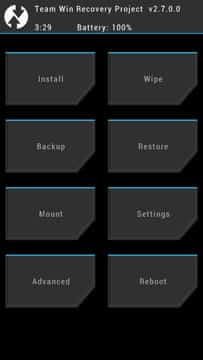
A game changing device from Huawei is something that was needed from the Chinese company after seeing counterparts such as Xiaomi quickly climb the sales charts all around the world. For the most part Huawei had a huge appeal in the Chinese market when they started developing high end smartphones to go along with the name that was established for manufacturing networking and communication components.
The P8, the company’s latest flagship succeeding the P7 is truly what Huawei was missing. A smartphone with proper mainstream Western appeal. Many of the Huawei devices failed to garner that much needed attention in the U.S. market.
Running on all homemade specifications Huawei chose not to go along with the masses and instead opt for their very own 2GHz 64bit HiSilicon Kirin 930 chipset. Thought an able performer, the Kirin chipset doesn’t quite match the already established Snapdragon 810 or the Exynos found in Samsung devices.
Other features include a 1080p 5.2″ display, 3GB RAM, a fairly decent 13-megapixel rear camera with an 8-megapixel front shooter. Powering all this is a 2680mAh battery which should get you through a day’s usage.
Although it’s not fair to say that there hasn’t been much development on Huawei phones but it’s slowly getting there. And today we are going to show you how to expand the functionalities of the Huawei P8 by flashing the TWRP custom recovery.
For those who don’t know what a custom recovery is, A custom recovery is a third-party recovery environment. A custom recovery does the same things as the stock recovery along with additional features. Custom recoveries often have the ability to create and restore device backups.
Preparations
First of all you will need to ensure a few things before we start:
- Confirm you are using an unlocked Huawei P8
Note: Carrier models might not work with this method. The user is to perform this at their own risk.
- Ensure that you have the necessary Huawei installed (Download here).
- Check if you have at least 80-85% of battery charge. We don’t want the phone dying in the middle of the process.
- If you have done this process before on other devices then you must be familiar with ADB and fastboot. Ensure that you have it installed.
For those who aren’t familiar with ADB and fastboot, Please refer to our detailed guide on How to Setup ADB and Fastboot on Windows within Seconds
- Enable USB-Debugging from Developer Options in the Settings menu.
- If you cannot find Developer Options, then you’ll have to first enable it by going to Settings -> About Phone -> Build Number and tap it 7 times until you see a small notification that you have enabled it.
- Then return to the Settings menu, you should find Developer Options there. Open it and enable USB Debugging.
- Make sure that you have backed up all your personal data and apps as all data might be erased!
- For Contacts, Calendar and People details use Google Accounts Sync to backup
- For Apps and App Data check out our detailed post here.
Disclaimer: The following procedure is highly risky and there are chances that you may brick your phone if not performed correctly, DroidViews cannot be held responsible if that happens. So user should tread cautiously and at their own risk.
Downloads
You will need to download these files on keep them on your Desktop.
TWRP for Huawei P8: Download here
SuperSU: Here
Flashing TWRP on your Huawei P8
After preparing your device along with all the required files we can start flashing.
Step 1 – Connect your Huawei P8 to your PC using the USB Data cable.
Step 2 – Open Command Prompt and type the following command
adb devices
You should be getting a message saying ‘List of devices attached’ along with your device name. This will confirm that adb has recognized your device.
If you don’t see your device it means you haven’t properly installed your device USB drivers.
Step 3 – Next reboot your device in fastboot/bootloader mode by typing this command in Command prompt
adb reboot bootloader
Step 4 – Now change the directory of your Command prompt to your Desktop by typing this command
cd Desktop
Step 5 – Type the following command next and press Enter
fastboot flash recovery twrp-2.8.7.0-p8.img
This will flash TWRP custom recovery on your Huawei P8 replacing the stock recovery.
Step 6 – Once the flashing is complete, select RECOVERY from the Fastboot menu to enter Recovery Mode, use the volume keys to navigate.
Step 7 – If you see the TWRP logo, then you have successfully performed the steps on you now have TWRP custom recovery installed on your Huawei P8!
Step 8 – You will now see the TWRP Touch Recovery Menu, Select ‘Reboot’ to reboot your device and exit from the recovery.
Rooting the Huawei P8
Now that we have successfully flashed the TWRP custom recovery you have the freedom to start flashing custom ROMs, kernels, and other modifications, it’s time to move ahead and root the device, so that we can start using root applications.
Step 1 – Once the device boots up normally, re-connect it to your PC using the USB cable.
Step 2 – Copy the SuperSU.zip file you had downloaded earlier from your Desktop into the root directory of your internal storage.
Step 3 – Reboot you Huawei P8 into Recovery Mode.
Step 4 – Select ‘Install’ and scroll all the way to the bottom till you see the ‘SuperSU.zip’ file.
Step 5 – Select the .zip file and swipe the bar to confirm. This will start flashing the .zip file.
Step 6 – Once the flashing finished you will see the ‘Reboot System’ option, click it to reboot your device.
Once the device reboots you will see the SuperSU app appear in your app menu. You can also confirm if your device is rooted by installing and running the Root Checker application.
[googleplay url=”https://play.google.com/store/apps/details?id=com.jrummyapps.rootchecker”]And that’s it you have successfully rooted your Huawei P8 and installed the SuperSU application, now you can start using root application.




Join The Discussion: